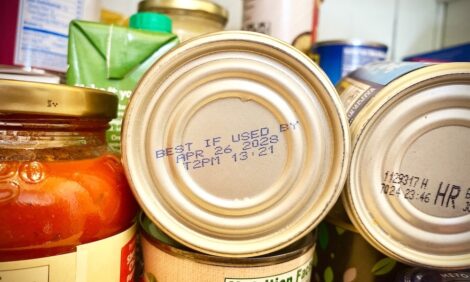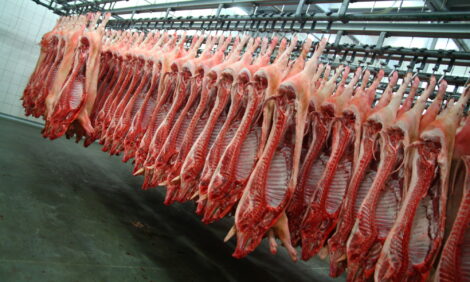



Preparing for the Antibiotic Growth Promoter Ban
By Stuart Lumb, Pig Industry Consultant - We’ve all heard about the problems the Danes have encountered with AGP removal and British producers might be concerned they face a similar fate. However, the Danes have not, until recently, had to contend with any of the crises that have hit our industry in recent years...
Prerequisites of being a British producer are: have deep pockets, boundless enthusiasm
and eternal optimism. I suspect the really clever ones have even mastered the art of pushing water uphill. They have stoically endured low profits, swine fever, foot and mouth, PMWS et al – so this latest hurdle should hopefully be overcome without too much difficulty.
| Increased mortality 0.6% | 23 | |
| Increased days to slaughter | 1.6 | |
| Increased medication | 20 | |
| Increased workload | 11 | |
| TOTAL COST | 70 | |
| Source: Niels Kjeldsen, Dansk Slagterier May 2005. | ||
The key is to minimise stress on the pig and ironically PWMS and applying Madec’s principles have got us a long way down the road in terms of doing just that. The table on the right summarises what the Danes reckon the current economic impact of AGP termination is, in pence per pig.
In Denmark, AGPs were finally totally removed from January 2000 and since then the use of therapeutic drugs has increased, significantly more so between 2003 and 2004, as a consequence of PMWS. Elanco has been staging a series of workshops around Britain, to prepare producers for the ban, which comes into force on January 1, 2006.
Around 25 producers from the Midlands, Shropshire, Cumbria,
Lincolnshire and of course Yorkshire gathered at the Beverley Arms Hotel to be welcomed by Elanco’s Steve Meakin and Richard Cawood. The group represented 20 percent of the national herd and interestingly one was already AGP free.
Gerry Brent and Mick Evans of Pork Chain Solutions, and Dr John Boyd of BOCM Pauls also gave presentions. The aim was to enable farm managers and operators to develop procedures which minimise stress and allow pigs to perform in the absence of AGPs.
Mick Evans elaborated on some fascinating data that the Farmex Barn Report technology is now producing. Electronic monitoring of temperature and water consumption is old hat in the poultry industry and is just being taken on board by the pig fraternity.
Pigs drink mainly between 9am and 7pm with a peak at 3-4pm. The pattern of water consumption is usually quite consistent unless there is a problem. Fortunately
these problems can now be detected by electronic monitoring. Changes in water consumption could indicate that a disease problem is in the offing. The beauty of this concept is that preventative measures, ie. medication, can be introduced before pigs start to shown visible signs of infection and hence the problem can be nipped in the bud. Another reason for a drop in intake identified by electronic monitoring could simply be a blocked water filter.
Dr John Boyd of BOCM Pauls is one of Britain’s top pig nutritionists. He has the knack of making nutrition sound sexy – no mean feat. Given that feed makes up 60-70 percent of our production costs, a good nutritionist’s advice is worth its weight in gold – literally!
Improving the digestibility of ingredients means better performance
and reduced stress. BOCM Pauls is using Higel – an extruded wheat product – in its diets. The extrusion process opens up the starch molecules which makes digestion easier.
Dr Boyd went on to mention many of the alternatives to AGPs that are now on the market – nutraceuticals, acidifiers, probiotics, prebiotics, antioxidants, immune stimulators and enzymes.
Acidifiers have shown a lot of promise as AGP alternatives and work by reducing the gut pH. A lower gut pH favours beneficial bacteria but suppresses harmful bacteria which thrive in higher pH conditions.
Danish studies have indicated that higher fibre levels provided by increasing the barley content in the diet are beneficial with regard to AGP removal.
The owners and managers that attended the training day are in charge of large numbers of staff – increasingly so as units get bigger. Much of the valuable information put over during the day will be passed on and put into practice by technicians on the units. This is often easier said than done and part of the training day was devoted to communication skills. Use simple language and make sure your staff get the message – by repeating it back to you was the message.
Steve Meakin was the final speaker, and highlighted that should disease problems arise whilst changes are being made, therapeutic interventions should be considered
as a back-pocket short-term solution.
Bug Soup
Increased stress linked to immunosuppressive viruses already present may be further compounded with the removal of AGPs and result in a flare up of complex respiratory disease – a bug soup of bacteria and viruses – in the nursery pig and ileitis in the grower phase. Lawsonia (which causes ileitis) is present on most farms but isn’t seen because AGPs minimise it’s clinical impact.
Ileitis can cost between 90p and £13 per pig but can be treated with Tylan – which has zero day withdrawal – at a cost of 40p per pig. ‘Accurate on-farm recording is vital,’ said Steve Meakin. ‘Many farmers with PMWS didn’t want to see it, but records are essential for good effective management.’
Delegates received an excellent, comprehensive set of notes and were asked when they got home to develop an action plan for their units, with timescales, which would be monitored by Elanco staff. This was a first class day. It is to be hoped that as a consequence the producers present will not find the AGP ban as traumatic an experience as has been the case in Denmark.
TAKE HOME MESSAGEGestation and lactation
Post weaning
|
Source: Stuart Lumb - Pig Industry Consultant - August 2005
A version of this article was published in Pig World Magazine - July 2005











